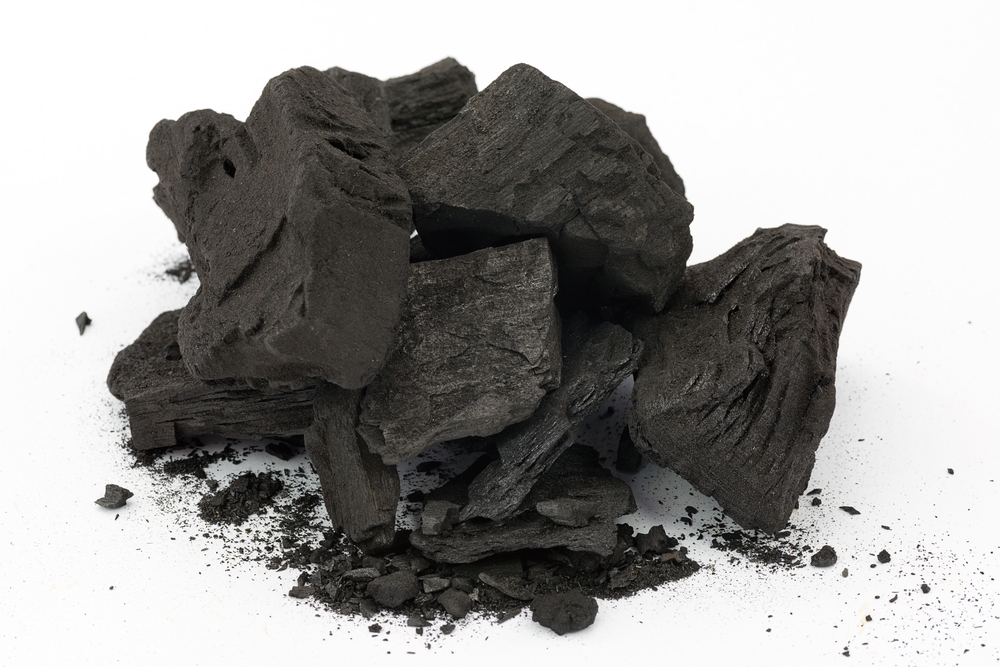We Fact-Checked the Science Behind the Republican Party Platform

Party Stance

The 2016 Republican Party platform, released Monday (July 18), details the party's stated principles and policies. Both of the nation's major political parties create platforms in advance of national elections so that voters have a clear view of the agenda the party will pursue if its members are elected to office.
To find out what Donald Trump, the Republican nominee for president, and other Republican elected officials might decide to do on health and environmental issues, Live Science examined the party platform. Then, our reporters and editors dug into the scientific research related to the party's stances on issues from abortion to electromagnetic pulses to climate change.
[Read our analysis of the Democratic National Committee platform and Election Day 2016: A Guide to When, What, Why and How]
Here's a guide highlighting the Republican National Committee (RNC) platform's beliefs and the science that may support or run contrary to these party stances.
Fetal pain

The RNC platform: "Over a dozen states have passed Pain-Capable Unborn Child Protection Acts prohibiting abortion after twenty weeks, the point at which current medical research shows that unborn babies can feel excruciating pain, and we call on Congress to enact the federal version."
The science: The American College of Obstetricians and Gynecologists (ACOG) considers the case to be closed as to whether a fetus can feel pain at this stage [20 weeks] in development. The best evidence on fetal development suggests that a fetus is not capable of feeling pain until the third trimester of pregnancy, which begins at about 27 weeks.
In order for a fetus to be able to feel pain, a number of neural pathways must be developed, to carry pain signals through the body to the brain. A 2005 review article in the journal JAMA sums up scientists’ understanding of how these pathways develop, and concludes that it is unlikely that a fetus would be capable of feeling pain before the third trimester. Since the article's publication, "no research has contradicted its findings," according to a statement from ACOG.
Get the world’s most fascinating discoveries delivered straight to your inbox.
Related: Do Fetuses Feel Pain? What the Science Says
Recent Supreme Court abortion ruling (Whole Woman's Health v. Hellerstedt)

RNC platform: "We condemn the Supreme Court's activist decision in Whole Woman's Health v. Hellerstedt striking down commonsense Texas laws providing for basic health and safety standards in abortion clinics."
The science: The Supreme Court recently overturned a Texas law called House Bill 2, which required doctors who perform abortions to have admitting privileges at a nearby hospital (less than 30 miles, or 48 kilometers, away from the abortion clinic), meaning they could admit patients to the hospital if necessary. The law also required abortion clinics to meet standards that are required for hospital surgery centers.
The U.S. Supreme Court ruled, on June 27, that these requirements did not offer medical benefits to the patients that were "sufficient to justify the burdens upon access [to abortion] that each [requirement] imposes," Justice Stephen G. Breyer wrote in the court's majority opinion. In other words, the law did not provide basic health and safety standards, as the RNC platform holds.
According to the ACOG, "abortion is one of the safest medical procedures performed in the United States." Studies show that less than 1 percent of U.S. women who have an abortion will experience a major complication that requires admission to a hospital.
Related: Supreme Court Abortion Ruling Explained
Fetal tissue research

RNC platform: "We urge all states and Congress to make it a crime to acquire, transfer, or sell fetal tissues from elective abortions for research, and we call on Congress to enact a ban on any sale of fetal body parts."
The science: Scientists say that because fetal tissue cells can divide and grow more quickly than other types of cells, they are highly valuable for research, including studies investigating human development, treatment of spinal cord injuries and diseases that affect the brain.
Fetal tissue is also uniquely suited to help scientists understand factors that affect a fetus' development during pregnancy, or that cause miscarriages.
Were fetal tissue not recovered for research, it would otherwise be discarded.
Embryonic stem cell research

RNC platform: "We oppose embryonic stem cell research. We oppose the federal funding of embryonic stem cell research. We support adult stem cell research and urge the restoration of the national placental stem cell bank… We oppose federal funding for harvesting embryos…"
The science: Embryonic stem cells come from human embryos. (An "embryo" develops immediately after fertilization, and is considered as such up until the eighth week of gestation, when it is referred to as a "fetus.") These cells have the ability to morph into any type in the body, such as a red blood cell or a nerve cell. Because of this flexibility, researchers can use embryonic stem cells to investigate potential treatments and cures for a number of human diseases, especially those where a certain type of cell becomes damaged or no longer functions as it should. Some diseases that could be helped by embryonic stem cell research include diabetes, cancer and Parkinson’s disease. [What Are Stem Cells?]
Although adults have stem cells, these cells are much more limited in their ability to morph into different cell types: For example, an adult neural stem cell can only morph into a nerve cell. In other words, embryonic stem cells have much greater potential for research.
In 2009, President Barack Obama reversed a ban on federal funding for research into embryonic stem cells. However, researchers whose projects are funded by the government still must use existing lines of embryonic cells, they are not allowed to create new cell lines because the rules forbid destroying embryos, from which the stem cells are extracted. Therefore, the initial extraction of stem cells from the embryos still would depend on private funding.
According to the National Institutes of Health, as long as stem cells are obtained from embryos that were produced by in-vitro fertilization but are no longer needed, and the donors give permission for the embryos to be used for research purposes, federal funds can be used for research on the resulting stem cell lines.
Human cloning

RNC platform: "[We] call for a ban on human cloning."
The science: Although there is no federal ban on human cloning in the United States, most experts agree that human cloning would be unethical, and say that scientists are nowhere near able to actually clone a person.
In a 2013 interview, John Gearhart, the director of the Institute for Regenerative Medicine at the University of Pennsylvania, told Live Science that concerns about human cloning are "overwrought," because scientists are not interested in doing it, since it crosses an ethical line.
Dr. Robert Lanza, chief scientific officer at the biotech company Advanced Cell Technology, agreed, saying that human cloning is unethical, because cloning comes with an extremely high risk of death or developmental abnormalities in the fetus. Trying to clone a human is "like sending your baby up in a rocket knowing there's a 50-50 chance it's going to blow up. It's grossly unethical," Lanza told Live Science in a 2013 interview.
Researchers would also need to get approval from the Food and Drug Administration before pursuing this type of work, which is not likely to happen, Paul Knoepfler, a stem-cell researcher at the University of California, Davis School of Medicine, told Live Science. Fifteen states also currently have laws that ban human reproductive cloning.
Keystone XL Pipeline

RNC platform: "After years of delay, the President killed [the Keystone XL Pipeline] to satisfy environmental extremists. We intend to finish that pipeline and others as part of our commitment to North American energy security."
The science: In November 2015, President Barack Obama vetoed a bill that would authorize construction of the pipeline, a project designed to carry tar sands oil (a mixture of clay, sand, water and black, thick oil) 1,179 miles (1,897 kilometers) from Alberta to Nebraska. However, the entire Keystone Pipeline System would have eventually extended 2,639 miles (4,247 km), branching off into several Midwest markets, as well as the Gulf Coast, according to TransCanada, the Calgary-based company proposing the project.
A 2015 report presented by the Environmental Protection Agency (EPA), found that if run at full capacity, the pipeline project could release greenhouse gases every year that would equal the annual output of 5.7 million cars on the road or almost eight coal-fired power plants, according to the Los Angeles Times.
Over a 50-year period, the tar-sands-oil project could have emitted about 1.3 billion more tons of greenhouse gases than if it were carrying conventional crude oil, the EPA report said.
Moreover, processing the tar sands in Alberta could also release large amounts of greenhouse gases from a carbon reservoir in Alberta into the atmosphere, making it difficult to meet the international goal of preventing the Earth from warming no more than 3.6 degrees Fahrenheit (2 degrees Celsius), scientists told Climate Central.
Related: When did Democrats and Republicans switch platforms?
Endangered Species Act

RNC platform: "There is certainly a need to protect certain species threatened worldwide with extinction. However, the Endangered Species Act (ESA) should not include species such as gray wolves and other species if these species exist elsewhere in healthy numbers in another state or country. To upset the economic viability of an area with an unneeded designation costs jobs and hurts local communities.
The science: The controversy surrounding gray wolves (Canis lupus), a keystone predator in ecosystems in the Western U.S., isn't a new one. Worldwide, gray wolves aren't listed as endangered by the International Union for Conservation of Nature, but local populations in the United States have faced challenges. For instance, they were wiped out in Arizona in the 1940s, Live Science reported in 2014. Nowadays, gray wolves have federal protections in 39 states and in parts of five states, according to the U.S. government.
Even if a species exists elsewhere, the loss of a local population can have large ramifications for an ecosystem. "You would have lost the benefits supplied by those populations," Jennifer Hughes, lead author of a 1997 study on local population loss in the journal Science, said in a statement. "This is a tremendously important dimension of biodiversity, which is often ignored." [In Photos: The Fight Over Gray Wolves' Endangered Status]
Climate change

RNC platform: "Climate change is far from this nation’s most pressing national security issue. This is the triumph of extremism over common sense, and Congress must stop it."
The science: Climate change, or global warming, is the gradual heating of the Earth, and 97 percent of scientists attribute it to human activity.
In 2013, the Intergovernmental Panel on Climate Change (IPCC) issued a report on the science of global warming based on the scientific community's consensus that humans caused global temperature rise.
"Human influence has been detected in warming of the atmosphere and the ocean, in changes in the global water cycle, in reductions in snow and ice, in global mean sea level rise, and in changes in some climate extremes," the report said. "It is extremely likely that human influence has been the dominant cause of the observed warming since the mid-20th century."
In fact, 2016 is on track to be the hottest year on record. In a recent study, NASA data showed that each month in 2016 was the warmest respective month globally. According to Gavin Schmidt, director of NASA's Goddard Institute for Space Studies in New York City, there is a 99 percent probability that 2016, on average, will surpass 2015 as the hottest year on record.
Scientists say that continued warming of the planet will affect the ice sheet, global sea levels, ecosystems and can have other devastating impacts on the world.
Coal

RNC platform: "The Democratic Party does not understand that coal is an abundant, clean, affordable, reliable domestic energy resource. Those who mine it and their families should be protected from the Democratic Party's radical anti-coal agenda."
The science: Coal is a relatively inexpensive energy source, but mining and burning it can have severe effects on human health and the environment, scientists have found.
When burned, coal releases sulfur dioxide (a cause of acid rain) and the greenhouse gases carbon dioxide and nitrogen oxide (a cause of smog and acid rain), according to the Union of Concerned Scientists. Burned coal also releases particles into the air that can affect people with asthma and other health conditions, the Union said.
For instance, China burns almost half of the world's coal, according to a 2013 analysis by the U.S. Energy Information Administration (EIA). Beijing, a city surrounded by coal-burning plants, is known for its air pollution. In just one month ─ January 2013 – there were 19 days when Beijing's pollution rating was above 300, meaning that the air was extremely unsafe to breathe, the Washington Post reported.
Such hazardous air can lead to "serious aggravation of heart or lung disease and premature mortality in persons with cardiopulmonary disease and the elderly; serious risk of respiratory effects in general population," a U.S. Embassy representative in China told the Post.
In the United States, air pollution from coal-fired plants accounts for an estimated 13,000 premature deaths, 20,000 heart attacks and 1.6 million lost workdays every year, a 2010 study by the Clean Air Task Force found.
In 2015, coal accounted for about one-third of the United States' electricity, the EIA reported. The states with the most coal production include Wyoming, West Virginia, Kentucky, Pennsylvania and Illinois, according to a 2014 EIA analysis.
Nuclear energy

RNC platform: "We support the development of all forms of energy that are marketable in a free economy without subsidies, including coal, oil, natural gas, nuclear power and hydropower… We support lifting restrictions to allow responsible development of nuclear energy…"
The science: Experts say that the amount of greenhouse gases produced by nuclear power plants is negligible, suggesting that nuclear power plants could be an attractive alternative to coal-driven plants, which are responsible for an estimated 35 percent of the United States' carbon dioxide emissions.
Researchers have found that the public is concerned about the safety risks associated with nuclear power, particularly after the 2011 Fukushima nuclear power plant meltdowns, Yale University reported.
However, the immediate risks associated with coal are significantly higher. According to the World Health Organization, coal is responsible for more than one million deaths each year — an estimated 4,025 deaths from coal for every single death from nuclear power.



